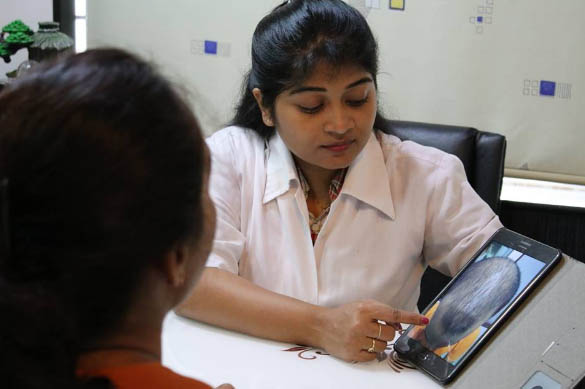Definition
Subarachnoid hemorrhage is a type of stroke that occurs when a blood vessel ruptures. Blood quickly fills the area immediately surrounding the brain and spinal cord. This space contains the cerebrospinal fluid. The fluid cushions and bathes the brain and spinal cord.
This life-threatening condition requires emergency medical care. The hemorrhage may increase the pressure around the brain. It can interfere with the brain’s ability to function.
Causes
This type of hemorrhage is usually caused by:
- Head trauma
- Rupture of cerebral aneurysms and other blood vessel deformities—spontaneous subarachnoid hemorrhage
- Bleeding disorders
- Drug use —especially cocaine and amphetamines
- Brain tumors—Tumors can contain abnormal blood vessels. Tumors may not be detected until after they bleed.
Risk Factors
Factors that increase your chance of developing subarachnoid hemorrhage include:
- Disorders associated with weakened blood vessels, including polycystic kidney disease, fibromuscular dysplasia, or connective tissue disorders
- Past history of aneurysms
- High blood pressure, which increases the risk of aneurysm rupture
- Smoking
- Heavy alcohol consumption
- Estrogen deficiency
- Family history of aneurysms
- Age: 35-65
Symptoms
If you have any of these symptoms, do not assume it is due to subarachnoid hemorrhage. These symptoms may be caused by other conditions:
- A very sudden, severe headache
- Brief loss of consciousness
- Seizures
- Nausea and vomiting
- Weakness on one side of your body
- Unexplained numbness or tingling
- Slurred speech or other speech disturbance
- Visions problems, such as double vision, blind spots, or temporary vision loss on one side
- Stiff neck or shoulder pain
- Confusion
If you these symptoms, get emergency medical care right away.
Diagnosis
Your doctor will ask about your symptoms and medical history. A physical exam will be done.
Tests may include the following:
- Images may need to be taken of your bodily structures. This can be done with:
- CT scan of the head
- Angiogram
- CT angiogram
- MRI scan
- Your bodily cerebrospinal fluid may need to be tested. This can be done with alumbar puncture
Treatment
Subarachnoid hemorrhage is a serious condition. It requires initial treatment in the intensive care unit. Despite treatment, many patients with this condition die.
The aim of treatment is to stop the bleeding, limit damage to the brain, and reduce the risk of it occurring again. If bleeding results from a cerebral aneurysm, a doctor will usually attempt to stop it using various techniques. Patients receive medicines to ensure proper blood flow to the rest of the brain. Absolute bed rest is needed to prevent additional bleeding. After the situation is stabilized, patients undertake a vigorous rehabilitation program.
If you are diagnosed with a subarachnoid hemorrhage, follow your doctor’s instructions.
Prevention
Aneurysms present since birth cannot be prevented. Because they are so rare, doctors do not advise screening for them. If an unruptured aneurysm is discovered by chance in a young person, the doctor may do surgery.
Avoiding smoking and controlling blood pressure can reduce the risk of a rupture if an aneurysm exists. Wearing a seatbelt and using a helmet can also reduce the risk of subarachnoid hemorrhage from head trauma.






















